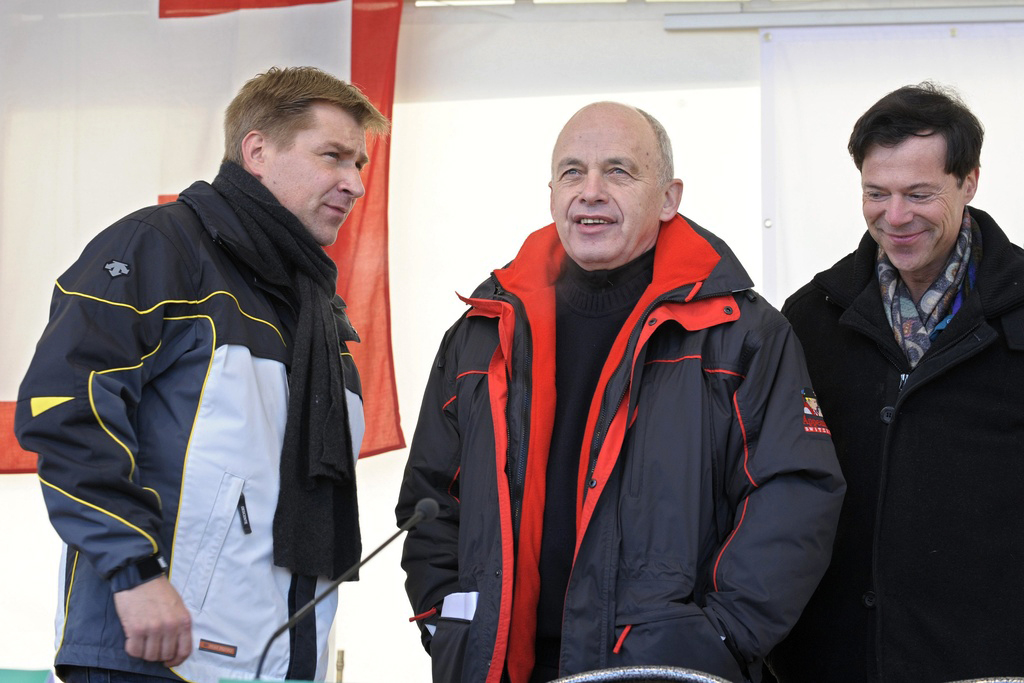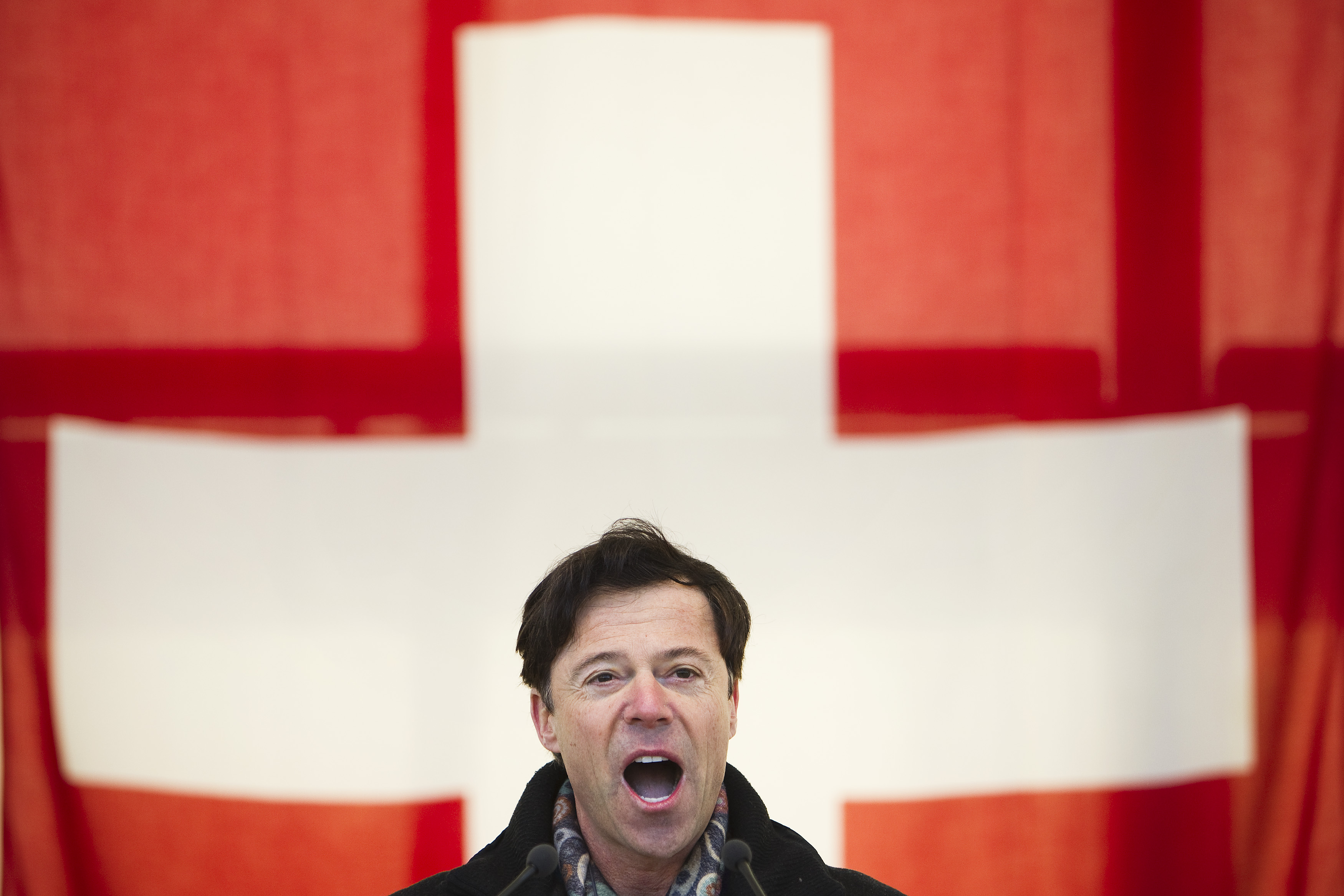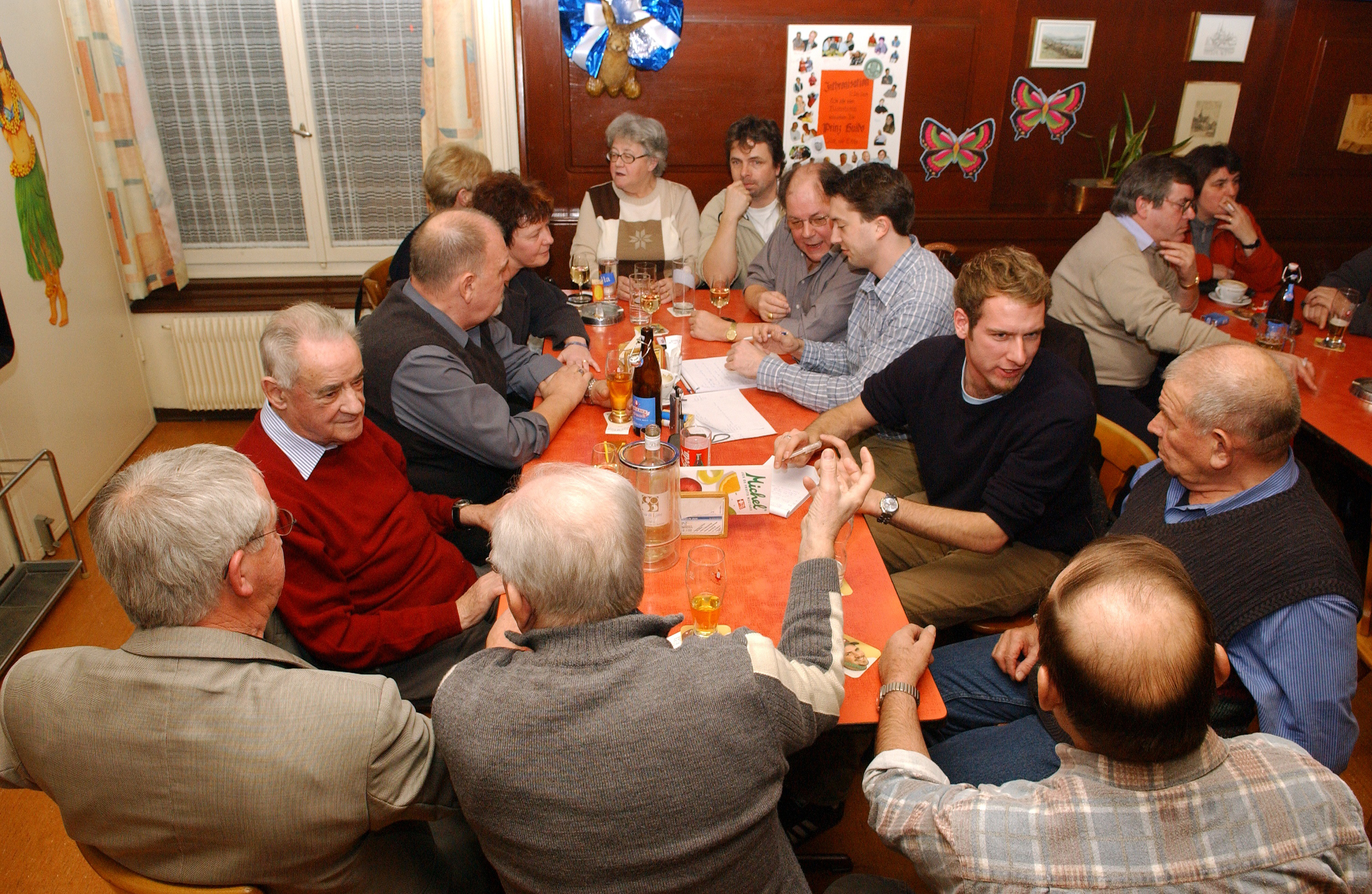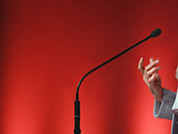Rightwing sails ahead in election poll

The rightwing Swiss People’s Party appears to be holding on to the lead ahead of October’s parliamentary election, a nationwide survey says.
The party has dominated the early stage of the campaign with anti-immigration issues and is gaining ground among men on high incomes and with top professional qualifications. On the other side of the political spectrum, the centre-left is struggling to stop voters haemorrhaging to small centre-right groups.
As it stands nine months before the scheduled general elections, the People’s Party would win up to 30 per cent of the vote while both the Social Democrats and the Greens stand to lose support. These are the main findings of the gfs.bern election barometer carried out on behalf of the Swiss Broadcasting Corporation.
“That’s a record figure for a survey. It shows the conservative backlash, while the centre-left camp is crumbling,” says Claude Longchamp, political scientist and head of the research and polling institute.
Longchamp does not hide his surprise at the large margin of at least 12 per cent between the People’s Party and its political opponents (see chart).
He attributes the strong showing to a general political mood marked by increasing immigration as well as last November’s ballot about the automatic deportation of foreign criminals. The institute’s findings are also in line with those of a recent worry barometer which ranked immigration and integration top of the list.
With caution
Compared with a previous election survey by gfs.bern three months ago, the People’s Party increased its support by up to 3.7 per cent, while the centre-left Social Democrats recorded the most significant drop.
The three other main parties won or lost between 0.3 and 1.2 per cent, while the small Liberal Greens gained considerably to make more than five per cent.
However, Longchamp is wary of reading too much into the figures as more reliable trends for the election campaign are only possible from August onwards.
“A lot depends on the capacity of the different parties to mobilise their supporters between now and October,” he says.
There are currently 12 political parties in the federal parliament, five of them are represented in the cabinet.
Campaigning
The survey found a number of indicators for the success of the People’s Party. Not only is the party perceived as the top choice by a traditionally rural population, but by old and young, high and below-average income earners, men and women, Protestants and Catholics.
“At the moment the People’s Party is the only political groups which appeals to all sections of the population,” says Longchamp.
The Social Democrats and the centre-right Radicals only remain first choice to a certain extent in big urban areas and among intellectuals.
The vast majority of citizens who consider themselves to be middle class in Switzerland – nearly 90 per cent – feel represented by the People’s Party. Whereas in the past this segment of the population felt more at home with the centre-right or the centre-left.
Most telling is the fact that 35 per cent of the respondents in the survey found the People’s Party to be running the best election campaign. None of the other parties’ campaigns won favour with more than five per cent.
Europe
Less surprising perhaps, the survey also found that citizens gave the People’s Party top marks for its competence in the key policy area of immigration, asylum and integration.
Yet Longchamp points out that other issues are likely to crop up over the next few months, particularly relations with the European Union.
“The other parties still believe in their own success. Besides, a single-issue election campaign would not be very interesting,” he adds.
The institute’s main findings about the continuing progress of the rightwing don’t seem to come as too much of a surprise to political scientist and author Mark Balsiger.
Top down
He says it is a result of the party’s high profile in the media since last summer following the launch of a public poll on the party’s charter and its success in November’s anti-criminal foreigner ballot.
The key factor for Balsiger is the People’s Party’s huge advantage over its rivals when it comes to its organisation.
“It has a strong leadership and is the only group with a top down structure,” Balsiger says. “In addition the party is really much better a ensuring a media presence.”
Many centre-right parties have a more federalist structure, with strong and influential cantonal chapters which makes it hard for the party’s national office.
Balsiger points out that the parties have launched their preparations for the elections earlier than ever before. He says the professional campaign managers do an excellent job but their work is hampered by the organisational set up.
“Much expertise is lost again with the transfer to the cantonal party chapters.”
At that level the campaign management is up to dedicated people who can’t commit themselves full-time. “It takes an enormous effort for the cantonal party chapters to run an election campaign,” he concludes.
The survey is based on interviews with 2,011 Swiss citizens across the country.
However, the Swiss abroad community could not be polled as the federal authorities refuse to give access to contact details for data protection reasons.
The survey was carried out between January 10 to 22.
The margin of error is 2.2%.
The poll was carried out by the GfS Bern institute on behalf of the Swiss Broadcasting Corporation, swissinfo’s parent company.
Five other polls are to follow in the run-up to the elections on October 23, 2011.
Parliament, made up of the House of Representatives and the Senate, has 246 seats and is elected for four years.
The current term ends next autumn.
At least 12 political parties represented the political spectrum from the Federal Democratic Union to the Communist Party.
The five main parties are the People’s Party, the Social Democrats, the Radicals, the Christian Democrats and the Greens.
The Conservative Democrats and the Liberal Greens are more moderate split offs from the People’s Party and the Green Party respectively.
(With input from Armando Mombelli)

In compliance with the JTI standards
More: SWI swissinfo.ch certified by the Journalism Trust Initiative






You can find an overview of ongoing debates with our journalists here. Please join us!
If you want to start a conversation about a topic raised in this article or want to report factual errors, email us at english@swissinfo.ch.